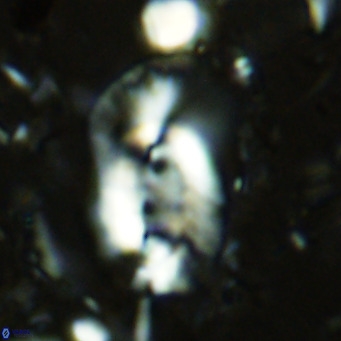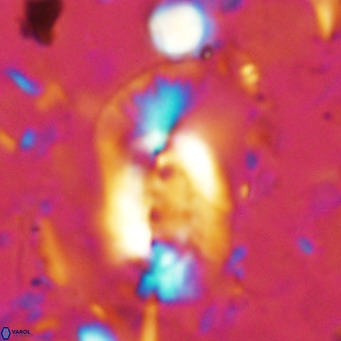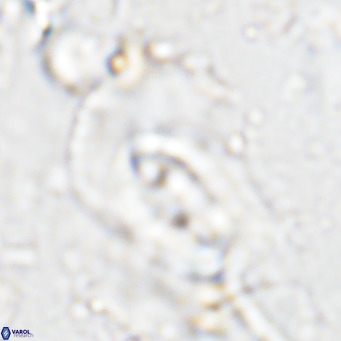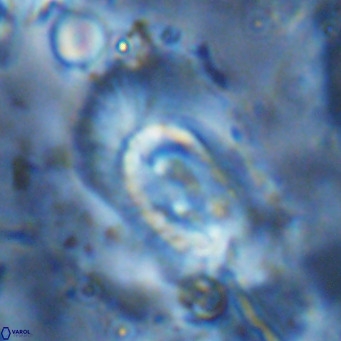Helicosphaera dyotrypes
Set number: 1097
-
1
-
2
-
3
-
4
-
5
-
6
-
7
-
8
10µm
Set number: 1277
-
1
-
2
-
3
-
4
-
5
-
6
-
7
-
8
-
9
-
10
-
11
-
12
10µm
Set number: 1278
-
1
-
2
-
3
-
4
-
5
-
6
-
7
-
8
-
9
-
10
-
11
-
12
10µm
Set number: 1279
-
1
-
2
-
3
-
4
-
5
-
6
-
7
-
8
-
9
-
10
-
11
-
12
10µm
Helicosphaera dyoporous Varol, 2025
A helicolith with a Type III (Helicosphaera carteri type) blanket, an expanded flange termination, and a proximal plate featuring two small round pores that are widely separated. One pore is consistently positioned on the longitudinal suture, while the other is located off the longitudinal suture.
The species name dyotripes is derived from the Greek dyotripes, meaning “two pores,” referring to the presence of two round pores in the central area.
Length = 9.96 μm; width = 6.66 μm; width with wing = 7-12 μm (all measurements taken in PC).
Optical Properties: Helicosphaera dyotrypes exhibits inclined extinction angles of about 60° on the blanket on the distal side and shows length-fast (−) elongation.
Helicosphaera dyotrypes differs from Helicosphaera paleocarteri in the alignment of its pores. In Helicosphaera dyotrypes, one pore is always positioned on the longitudinal suture, while the other is off the suture. In contrast, Helicosphaera paleocarteri has both pores consistently aligned off the longitudinal suture.
Theodoridis, S. 1984. Calcareous nannofossil biostratigraphy of the Miocene and revision of the helicoliths and discoasters. Utrecht Micropaleontological Bulletin. 32: 1-271.
Varol, O. 2025a. A practical guide to optical studies of calcareous nannofossils. Grzybowski Foundation Special Publication. 29: 1-222



